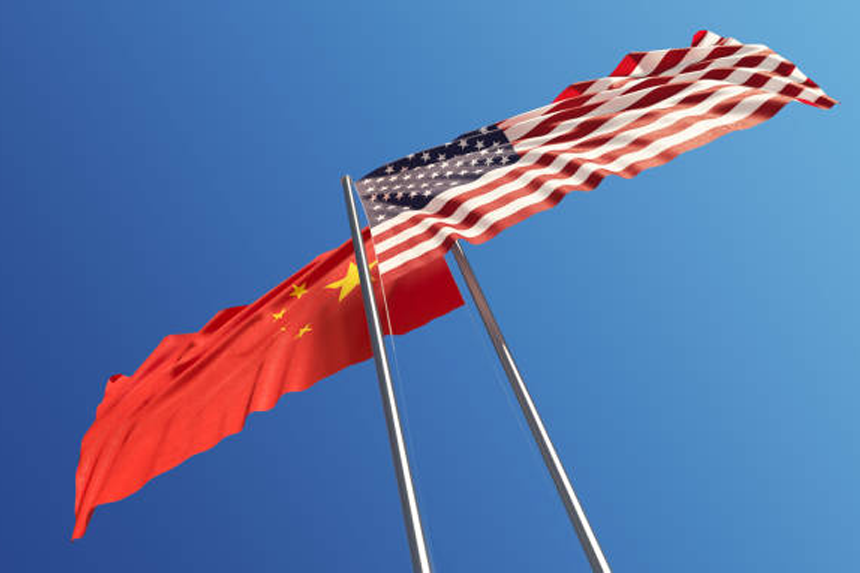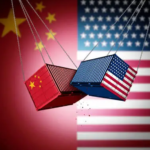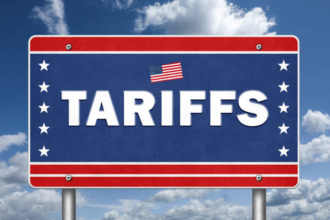The World Trade Organization (WTO) has received a formal protest from China, which claims the US has made “unfounded and false allegations” about its involvement in the fentanyl trade. The action was taken just one day after US President Donald Trump, who was worried about the flow of illegal drugs into the US, put a 10% tariff on Chinese imports. Economic ties between the two countries are becoming more strained as the US-China trade conflict intensifies.
China said in its WTO application that the levies were “discriminatory and protectionist,” in violation of international trade regulations. However, because the WTO’s dispute resolution panel is still inoperable, experts think China is unlikely to receive a positive decision. A former official at the World Trade Organization said, “It has no possibility of succeeding.”
What Impact Will Trump's Tariff Plans Have on International Trade?
The global trade environment is now unpredictable as a result of Trump’s larger tariff-imposition approach. He has said time and time again that such policies will assist close America’s trade deficit by incentivizing businesses to produce goods in the United States. However, many businesses are delaying expenditures or passing on higher prices to customers, raising concerns about the economic consequences of these decisions.
The corporate sector is already feeling the effects of tariffs. Because of the uncertainty surrounding tariffs, Canadian tights producer Sheertex said that 40% of its 350 employees would be temporarily laid off. In the meantime, businesses hurried to accumulate foreign-made goods ahead of possible tax hikes, which caused US imports to soar to record levels in December. Imports reached $293.1 billion, the most since records began in 1992, up 4% from November, according to the Commerce Department. Additionally, this spike led to the biggest US trade deficit in almost two years. International trade and global supply networks have been greatly disrupted by the US-China trade war.
What Is China's Reaction to US Tariffs?
China’s response to US trade restrictions has been prompt. Beijing has begun an anti-monopoly probe of significant US IT companies and placed tariffs on US imports in reaction to the most recent tariffs. According to reports, Apple’s stock value has dropped as the anti-monopoly authority in China is ready to examine the company’s policies and App Store fees.
China’s WTO case was filed quickly, indicating Beijing’s willingness to engage in a protracted trade dispute. According to a prominent China economist, “For the wider Chinese economy, this is definitely manageable.” According to economists, the overall impact on China’s economy will be minimal, even though firms like Shein and Temu might face difficulties as a result of the new tariff laws. Businesses are being forced to adjust to new trade restrictions as a result of the US-China trade war, which is influencing economic policy on both sides.
Can This Conflict Be Resolved by the WTO?
The US and China have sixty days to consult and settle their disagreements in accordance with WTO norms. China may ask for a panel of judges to adjudicate if a settlement cannot be found. However, because the US has prevented the appointment of new judges, the WTO’s appellate body—which handles trade disputes—remains paralyzed.
The United States has previously disregarded WTO decisions. The United States disregarded an earlier WTO verdict that concluded Trump’s steel and aluminum tariffs breached international trade laws. According to a former head of the WTO appellate panel, “It may be a strong case under the old WTO system, but it has no possibility of succeeding now.”
What Are the Wider Effects on the Economy?
Growing trade deficits are a result of the ongoing trade conflict between the US and China. With $25.3 billion more in exports than imports in December, China continues to have the biggest goods trade surplus with the US. In terms of trade imbalance, the European Union, which Trump has also threatened with tariffs, came in second.
On the other hand, the US and the UK had a modest $2.3 billion trade surplus. In total, the US trade deficit—which includes services—rose 17% last year to $918.4 billion. According to the Commerce Department, the trade gap reached its largest level since March 2022 in December, totaling $98.4 billion.
With China and the US engaged in a conflict over trade policies and global economic dominance, businesses and economies around the world continue to confront uncertainty as trade tensions rise.








